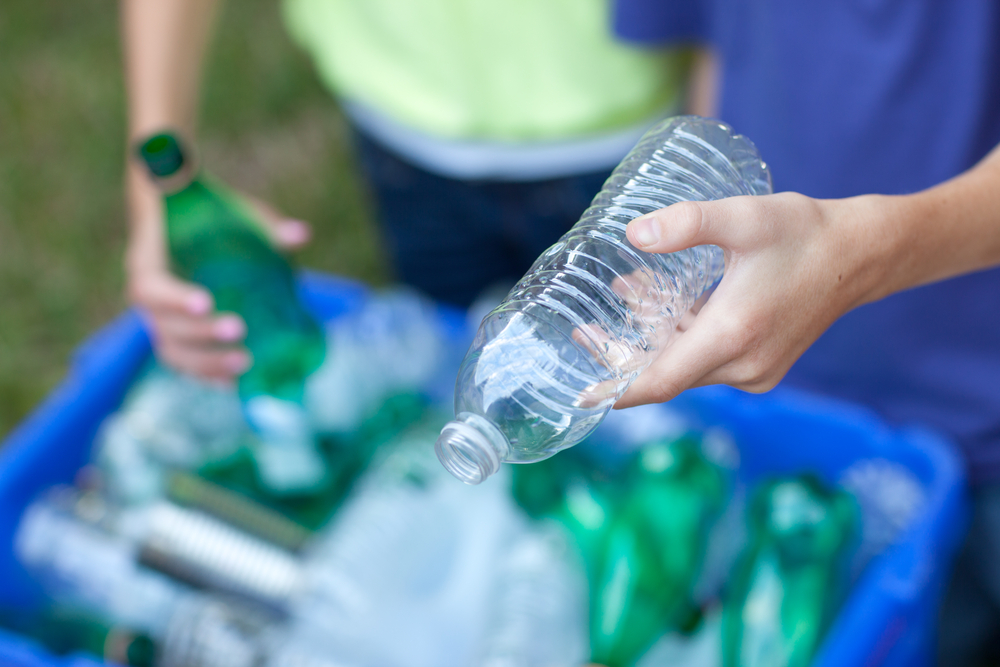How to Help the Environment this Summer with Simple Choices
People often think that helping the environment means investing in expensive energy-saving devices or pricey organic produce. However, this couldn’t be further from the truth. Knowing how to help the environment in the smallest ways is a step in the right direction. There are plenty of ways of helping the environment through lifestyle changes—in the way you eat, dress, travel, and even store things.
- Use Reusable Water Bottles to Help the Environment
- Recycle Plastic Bottles
- Use Reef-Safe Sunscreen
- How Eco-conscious Eating can Help the Environment
- Help the Environment by Reducing Plastic Use
- Try Eco-friendly Workouts
- Minimize Travel
- How to Help the Environment in Other Small Ways
Use Reusable Water Bottles to Help the Environment
This is probably the easiest and more economical tip. Reusable water bottles are a great way to cut down plastic waste. Think about every time you buy a plastic water bottle out of convenience, only to throw it away when it gets worn easily.

Water fountains are generally widely available in public places, so sticking with your reusable water bottle won’t leave you high and dry. There are plenty of durable materials to choose from—stainless steel, glass, and BPA-free plastic, to name a few. There are also loads of cool colors and designs to choose from. With a reusable water bottle, you can express your style while helping the environment.
Recycle Plastic Bottles
Sometimes buying plastic bottles is unavoidable. The best thing you can do in this case is to ensure that the empty plastic bottles are recycled properly. This way, they won’t add to the dangerous amounts of plastic in the environment and also help manufacturers save raw materials.

Fortunately, most plastic bottles are 100% recyclable. They are usually made from either PET or HDPE plastic, both of which can be recycled. You just need to collect the bottles and locate a recycling bin in your neighborhood. Check whether these recycling centers accept the bottle caps or just the bottles. Ensure that the bottles are empty before placing them in the bins.
Use Reef-Safe Sunscreen
Sunscreen is an incredibly important thing to have in your bag, as all skin types are prone to UV damage (even in cloudy weather!). But, the last thing anyone expects is the amount of damage these little bottles of sunscreen cause to coral reefs.
Common sunscreen brands often contain chemicals called octinoxate and oxybenzone. Scientists have discovered how the presence of these chemicals in ocean water can cause bleaching and higher risk of viral infections in corals.

But if people are wearing sunscreen and not dumping it into the ocean, is this still a big deal? Yes! In one study at a popular beach which sees around 2,000 or more swimmers a day, close to 6,000 pounds of sunscreen end up in the ocean per year. This problem is so bad in the state of Hawaii that they have banned sunscreens containing those chemicals. So, check the list of ingredients for oxybenzone and octinoxate and avoid those sunscreens. Instead, look for reef-safe labelling. Opt for mineral-based sunscreens with ingredients like zinc oxide or titanium dioxide, as these haven’t been linked to coral bleaching.
How Eco-conscious Eating can Help the Environment
Another easy way to help the environment is to switch up your diet and eating habits. It is often easy to forget how food affects the environment because you can’t directly see the harm that food production can cause. However, there is an ever-increasing demand for food, and some of the methods of food production can take a toll on the environment.
How can you switch to a more eco-friendly diet? Increase plant-based ingredients when you go grocery shopping. Animal products like meat and dairy tend to use more water and land resources, in addition to causing more air pollution. For example, in one study, it was found that emissions per gram of red meat (e.g., beef, lamb) is about 250 times greater than those from legumes (e.g., lentils, beans).

So, it isn’t a surprise that people are opting for more plant-based diets, with some even going fully vegan. However, these dietary changes require a bit more planning and learning first. Meal prep for vegans or even pescetarians can be quite tricky if you don’t know which foods to incorporate at first. But, there are now plenty of meal delivery and prepping services to make your journey far simpler.
Help the Environment by Reducing Plastic Use
It’s not just what you eat that could be changed to help the environment. How you eat it can also play a role. Plastic cutlery is one of the biggest culprits behind the plastic waste crisis. Single-use plastic straws, cups, stirrers, plates, forks, and spoons all contribute to this. In some estimates, the US alone throws away about 40 billion plastic utensils every year.
There are multiple ways to consume food without plastic utensils. Some companies, for example, have taken this design challenge to the next level, creating edible “biscuit” cutlery. Of course, there are simpler ways to do this:
- Choose fruits or vegetables that are packaged in paper or cardboard
- Bring fabric bags to the grocery store to bag your food
- Invest in glass, bamboo, or steel reusable straws
- Buy a travel mug to cut down plastic cup use
Try Eco-friendly Workouts
Another great way to help out the environment is to cut down on unnecessary transport. For example, working out at a gym means you have to drive to and from the gym. Think about if you can cut down on trips to the gym by working out at home.
Invest in simple workout equipment like dumbbells, resistance bands, and yoga mats. There are plenty of plyometric and simple calisthenic exercises that could be performed at home. You also don’t need a heavy treadmill at home to get your cardio in. Here’s a simple at-home cardio workout you can do:
Minimize Travel
Travel is already one of the biggest contributors to air pollution, particularly air travel. When you’re booking summer holidays, think carefully about the destination. Can those same activities be done at a nearby location that you could walk or cycle to? If so, then you can cut down on unnecessary travel this way.
How to Help the Environment in Other Small Ways
There are so many other tweaks and new habits you can add to your daily routine to help the environment. For example, consider not limiting your use of the air conditioner or cycling to work instead of driving. Supporting local farmers by buying local produce is another way to cut down on emissions, since transporting food contributes a lot of air pollution.
Helping the environment is simpler than most people think. Everyone can adopt a habit that doesn’t cost any time or money. If enough people made small changes in their lifestyle, it would make a huge positive impact on the environment.








